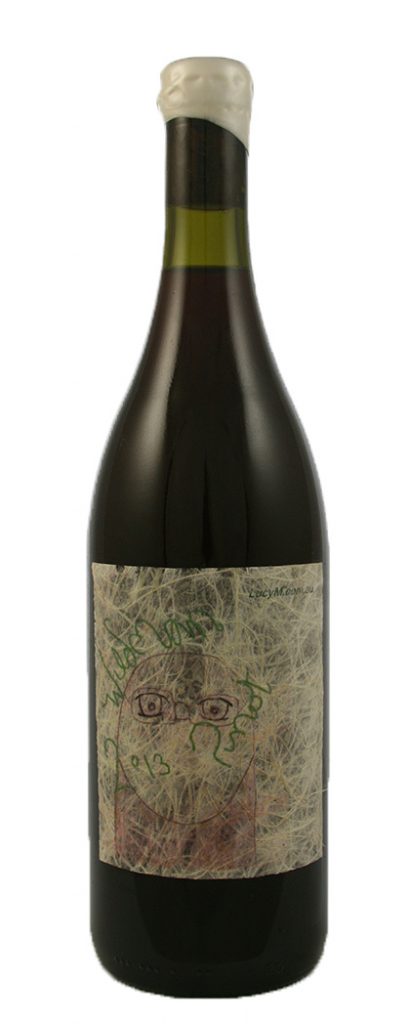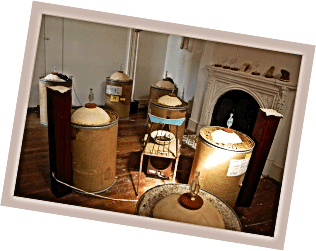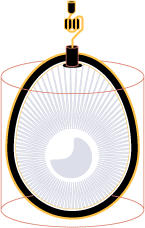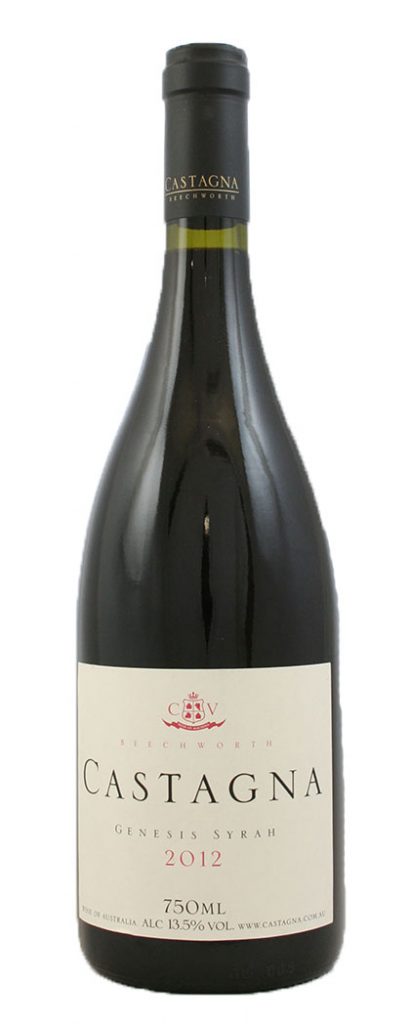This is a series profiling the producers on our list who make natural wines. Within this series we will be highlighting some of the extraordinary and rare bottles and vintages that have helped to shape our appreciation of natural wines over the years. Previous posts from our 100 Great Natural Wines series include Austria, Spain, and a hefty chunk of France & Italy, and can be found here.
For many years, Australia had a wine culture with a self-inflated sense of its own importance. This was partly to do with the desire to create worldwide export markets and lump every wine into Brand Australia. The arbiters of Australian wines saw themselves as defining the market, being both progressive and aggressive. There’s more to culture than a flag and public relations breast-beating. And although Australia as a diverse country produces more than its fair share of superb wines, there became a sense that you had to be on-message as a producer. A combination of factors has helped to puncture this complacency. Firstly, an amorphous crew of small independent-not to-mention-iconoclastic and outward-looking growers emerged at roughly the same time; true vignerons in the French sense of the word, reconnecting with the land at the one end of the process and connecting directly with the new generation of sommeliers and consumers at the other. With their relatively tiny production they were able to dance to their own beat and thus satisfy their sense of curiosity rather than cater to the perceived needs of the market. Their wines were fun, possessed an artless drinkability, and since they appeared, the word smashable has become a vivid part of Aussie wine vocabulary; for these nourishing wines are primarily meant to destroy your thirst and lead to another bottle.
Despite their happy-go-lucky jazz-and-japery approach and seemingly extemporaneous approach to winemaking, these vignerons also understand the importance of properly holistic farming as the precursor of good juice. Many of the vineyards are farmed organically, and more than a few are biodynamic (or converting to). This is not some trendy marketing ploy, but viewed as necessary if the vines are to work more efficiently and bring the grapes to maturity earlier with correspondingly better levels of acidity. One senses that winemakers are seeking better balance in their wines–and not by means of a battery of oenological tricks to compensate for the lack of wine in the first place. Indigenous yeasts, skin-contact, the use of ceramic eggs, cement vats, wild ferments, nothing added or taken out – the entire spectrum of low intervention from wines patiently sculpted by time to vital and fruity soif wines. Forget jam jamboree and look for fruit with a mineral seam, a salty aftertaste and internal harmony.
The wines stand or fall on what is in the juice–no acidifying here, no enzymes and no manipulations. Cloudy wine–bring it on, for these clouds have a silver lining.
These are micro-operations–many of the growers have to buy grapes since they own and farm tiny vineyard plots. However, the artisan impact on the Australian wine scene has been disproportionate to the size of production and the number of the growers because Australia’s wine bar and restaurant culture has embraced these deliciously drinkable wines with enthusiasm. You will now discover many brilliant wine lists mixing the best of contemporary Europe with the brightest of the new wave of local growers.
Of course, there is not one uniform wine style. On the one hand, you have the carefully-crafted wines from Julian Castagna that demand serious consideration and lengthy ageing. On the opposite wing you, have countercultural experimentation of Anton von Klopper, Tom Shobbrook and James Erskine, and more latterly Pat Sullivan, Xavier Goodridge, Dane Johns, Gareth & Rainbo Belton and Iwo Jakimowicz and Sarah Morris. The wines they are a-changing, but there is a slow coming-together as some of the biodynamic wines are becoming more natural, and some of the natural wines becoming more biodynamic (by which we mean focusing more on producing good grapes in the vineyard).
WILDMAN PINOT NOIR ~ LUCY MARGAUX WINES
Vin de Cosmos

Anton von Klopper is/was the wild man of the Basket rangers, a small group of growers working in the Adelaide Hills. This is an off-road destination with off-the-map winemaking.
“A path is only a path, and there is no affront, to oneself or to others, in dropping it if that is what your heart tells you. Look at every path closely and deliberately. Try it as many times as you think necessary. Then ask yourself alone, one question. Does this path have a heart? If it does, the path is good; if it doesn’t it is of no use.” (Carlos Castaneda)
In 2002, with wife Sally and daughter Lucy, Anton purchased a 16-acre cherry orchard and began creating their own “Domaine” in the Adelaide Hills.
“We aim to produce wines that express themselves,” says Anton. “To achieve this at the highest level I would never consider adding yeast, bacteria, acid, sugar or any of the other artificial or natural additives. A winemaker can choose to be an artist or a chemist. I believe that winemaking is a craft; all our decisions are made with the aid of a wine glass and traditional skills, with the aim of developing the wines true identity.”
Anton is part of the Basket Range community and vinifies small parcels of fruit from friends’ small vineyards that surround this unique part of the Adelaide Hills.
“My skills have also increased in the last few years by using the perceptive palate technique and clairsentient thought,” Anton continues. “More recently this impulse has formed a group of beautiful people that understand natural wine. In regards to this my close family is Sam Hughes (RIP), James Erskine, and Tom Shobbrook. The four of us formed Natural Selection Theory, a wine movement that was like free flow jazz, outrageous winemaking with no beat of security, only an endeavour to push the boundary of wine beyond its stale present.”
Set in Basket Range, South Australia, a series of hills located west of the city of Adelaide, Lucy Margaux Vineyards is one of a small group of farms surrounded by untouched wilderness. LMV enjoys the mild humid influences of the ocean however; at five hundred metres above sea level the region is cool and grows quality Pinot Noir. Yes, you heard it – in Adelaide Hills. LMV currently has 10 acres of Pinot Noir planted on 4 different aspects. The row spacing is 2.4m and the inter-vine spacing is 1.5m. The vines are cane pruned and the cordon height is 50 cm, which allows the fruit to ripen evenly from the warmth of the earth.
The vineyard is dry grown and 100% biodynamic, which means the land has never seen fertilizer, herbicides, pesticides, fungicides or any other chemical spray. The vines themselves sprawl and straggle, clinging to the side of the steep hills.
Anton in the early days specialised in single vineyard expressions of Pinot Noir and grew his own fruit as well as sourcing some from exceptional vineyards farmed by friends.
Open topped fermentation – under the stars, as Anton would say, a wine of the cosmos, Not touched, not racked, a wine free to do its own thing,
Almost brownish in colour with notes of gravy browning, raspberry vinegar, umami, and wild briary fruit, raspberry canes. Or…
…VIOLATED, FU*K*DUP, SERIOUSLY, WHOLE BUNCHES JUMPED ON ONCE AND LEFT OUTSIDE TO ROT!!!. Nearly 50 days on skins and voila! The mags are made without the addition of SO2. Made so wrong, but it taste soooo right. Pure innocence and totally rough around the edges. (Blackhearts & Sparrow website)
Totally radelaide.
Why we love this: A wine that breaks all the rules is a liberating thing. Anton pushed every boundary, allowed wines to go back to nature. Wildman was where wine faults created a new wine life-form.
If you like this: When you come across wines with names like Vin de Sofa and Rainbow Juice you know that you are dealing with vignerons who take quaffability seriously. Gareth and Rainbo, the gentle folk in question, work in the Basket Range in the Adelaide Hills, lovingly hand-crafting some more-than-decent throat-charmers. Their own vineyards have a fair lick of altitude – 600-metres-plus in them thar hills – which provides the freshness and focus for fruit-driven wines, particularly important when you are growing Pinot Noir and aromatic varieties such as Riesling and Gewurztraminer. The touch is gentle (for want of a better word), the wines are lively and gulpable. It all starts with the farming which is organic with some biodynamic practices, the yields ranging from 15-30 hl/ha and the gentle use of old barrels to ferment and mature the wine. These are wines sans maquillage. To call them Rainbow Juice a red wine is not strictly accurate – it is part of the popular new wave of juicy Aussie wines where grapes of all creeds and colours are co-fermented (twenty-three of them – but who’s counting) and the result are reds that are roses – or something – by any other name. Grape to gullet – do not pass go!
PROJECT EGG RUNWAY 3 ~ NATURAL WINE SELECTION THEORY
The gang of pour

An egg-you-menical wine made by four egg-hedonists…
Gerard Manley Hopkins’s heart stirred for a bird. Embryonically speaking, my heart kindled for an egg, a ceramic egg filled (almost filled) with Hunter Valley Semillon. I’m an advocate of letting wine speak for itself and when the wine is not available its authors and editors should be our cicerones.
To fully unscramble this egg one should meet the protagonists (or hen-ablers?): Sam Hughes (RIP), James Erskine, Anton von Klopper and Tom Shobbrook, like-minded adventurers, not just in wine, but in food, philosophy, music and art. The pleasure in making and drinking wine allied to a desire to push boundaries and rediscover authenticity was captured in their joint venture called Natural Selection Theory with schemes such as Voice of the People and Project Egg. Human energy and creativity catalysed with natural unpredictability foments/ferments inspirational wine. NST composed wine as some would compose music, they saw things in the round (or the ovoid) and seek the harmony between nature, the man and the wine. So often wine is constrained by the lack of vision of the winemakers; it is about creating a square product for the quotidian market and the broadest range of consumers. It lacks integrity and a kind of energy also. A premeditated wine is usually a medicated wine; the serendipitous approach makes our pulses beat that much quicker.
In their own words Ab ova usque ad mala…
Follow one rule – do nothing but relax and get into the moment. Be part of life, here, now, the part of life that one day doth die – shhh and listen, this is our our swan song as it cracks free from containment…
And let us say – what if you had never made a wine before? How would you do it, could you do it? What would you do? Love it we bet – but don’t rule it, isolate it from yourself so that it grows into itself, have the strength to let it fail.
Let the grape speak loudest, not the voice of its vice.
So to the grape – Semillon – world renowned for being blended with sauvignon! And the place – the Hunter, world renowned for ummm, being near Sydney! What a match! With vines that the sacred voodoo-chile of modern Australian wine, Mr Len Evans OBE himself, planted! With this wine we plan to reinvent the wheel! This time we aim to make it round! And for it to go down, down, down, down, down. A wine like digging a mine, something with which to get medieval on our sparkling 21st century palates.
9 eggs made to nature’s own specifications.
Each one 44 litres of individualistic, expressive, feral Hunter Semillon – free-spirited souls unlike anything seen in today’s mass meat market, a market where an institutionalised clone of a retro classic is still seen as cutting edge.
9 eggs housed in 3 classic soil types – insulation and inspiration from where the vine doth flourish – 3 eggs immersed in quartz sand for isolation, 3 caressed with red clay for love and finally the final trio braced with limestone for strength. In each set, 3 different skins ratios directly inspired by the question of What If? A dreamy, loving sado-masochist is in our midst, don’t you just love your own kids!
And listen, do you hear – a lullaby to soothe their savage souls. The ethereal isolating squeal of glass; the warm loving beat of a pure heart and the power of bloody singlemindedness – a three piece band to play onwards and upwards as metal birds screech above our heads. These metal birds, 100 meters above the incubation chamber, rip as they come to roost at the gateway of Australia – Runway 3, Kingsford Smith Airport, Sydney, Australia. An explosion of the senses, each pack will feature a 12inch Album dedicated to the Sounds of Birth – music, noise, conversation, the backing track to the new day which is dawning.

To the res. The egg is a cute ceramic sculpture born of a desire to experiment and to link wine, terroir, music and men.
To hold it is to feel close to it (you have to clasp it in both hands), to pour it is to love it, to see is to feel warm and to taste is to suspend judgement. This is a liquid that you want to both drink and roll around the mouth, feel the wine slowly releasing and unfurling its delicate flavours across your tongue and into your consciousness. I am loathe to give a tasting note to a wine that I enjoy drinking, but for completists and curious cats this liquid is the colour of cloudy apple juice, haze. Flavour a-plenty, yes, but more on the texture, firm and yet curved, combining primary and secondary aromas of malt, smoke and spice, apple and cinnamon with oblique notes of nutmeg, leesy spice then resurgent toasted hazelnut flavours. The full Semillon. And brilliantly whisperingly fugitive – the Hunter becoming the hunted…
NST also believe that the essential attribute of any good wine should is drinkability, that nourishing flavour and texture that makes you want to smash a bottle. Or, in this case, crack an egg…
Why we love this: The egg itself is a beautiful object. And it came with a crazy vinyl LP.
GENESIS SYRAH ~ CASTAGNA
Terroir in a chestnut

From an egg to full-blown genesis.
Produced in tiny quantities Julian’s wines are sold en primeur and only released if he feels that they meet his exacting standards- there were no wines released in the 2011 vintage, for example. Julian currently produces two levels of wine. The Adam’s Rib label, featuring a red blend and a white blend, is run by his son as an odd hybrid between a second label (for slightly lower quality juice) and a separate project altogether.
The Castagna line of wines contains a white called Ingenue made from Viognier, Allegro rosé, styled after the pink wines of Tavel, and several reds, including a Sparkling Shiraz, which is a style of wine that Julian adores.
The Castagna Vineyard itself is situated at an altitude of 500 metres, five-and-a-half kilometres outside the beautiful town of Beechworth in Northeast Victoria, high in the foothills of the Australian Alps. The soil consists mainly of decomposed granitic-loam on a base of clay. The climate is distinctly Mediterranean with hot days and cool nights during the important part of the growing season. The land is farmed biodynamically, using Rudolf Steiner’s principles, because Julian believes it is the best way to achieve optimum fruit quality that best expresses its terroir. The vineyard is hand-pruned and the fruit is hand-picked and cropped at a bit less than two tons per acre.
The winemaking at Castagna is pretty much what you would expect from a tiny biodynamic outfit that produces 1800 cases of wine across two labels. Everything is done by hand, with very little electricity. Hand harvesting leads to gentle crushing of whole clusters and some destemmed grapes. Fermentations take place at their own speed with native yeasts, pressing is done by hand with a basket press, and the wines are never fined or filtered. Elevage varies between 18-20 months using only the very best, tight grain French oak available, about half of which is new each year. The intention is to make, as simply as possible, wine which is an expression of the place where it is grown.
The results of patient approach truly speak for themselves. The wines range from very good to tremendous, and clearly reflect both the soil and the season in which they are made as well as the vision of the person who has made them. Julian is clearly making wines of philosophy and of place, and succeeding admirably, even as his wines defy the stereotypes of Australian wine as big, over-oaked, fruit bombs.
The colour of the Genesis Syrah is dark plum to magenta but yet still somehow transparent. A full throttle wine of depth and complexity. It smells of cassis and spice with enchanting aromas of cedar, sweet black pepper, freshly dampened earth and vanilla pod – yet restrained. The palate is rich, concentrated, deep – dark and mysterious with fine powdery tannins and a lovely drying extract. A subtle, delicate floral aspect lingers with the finely powdered tannins on the finish. The graphite-like melted granite character and the fresh acidity ensures the wine finishes long, dry and spicy, always alive.
If you like this: Jauma Wines is super-genial James Erskine, former sommelier and previous member of wine supergroup Natural Selection Theory, who established himself in the McLaren Vale, making wines from old vines in McLaren Vale, predominantly single vineyard expressions of Grenache. Although James loves the acid in old vines Chenin grown on sandy soils, and it is a bright linear expression. Back to the G-force. Pure Grenache comes in the form of the delightfully upbeat Like Raindrops (whole bunch freshness) and Genovese which is also in the smashable idiom. Ralph’s Clarendon has ironstone in the soil. The grapes are destemmed and the wine is darker and more concentrated. There’s Shiraz too, with the drinkability the watchword. Audrey Clarendon is a whole bunch version with refreshing stemmy dark cherry fruit. And finally there is Tikka The Cosmic Cat Shiraz (with a dollop of Grenache). If the Castagna Genesis is a wine for the dinner table, Tikka is crown-cap flipside of the grape to accompany all things barbecued, from meat to veg. All James’s wines are fermented naturally in plastic tubs and puncheons and bottled without filtering or fining and, in most cases, no sulphur.
*
shop@lescaves.co.uk | sales@lescaves.co.uk | 01483 538820

